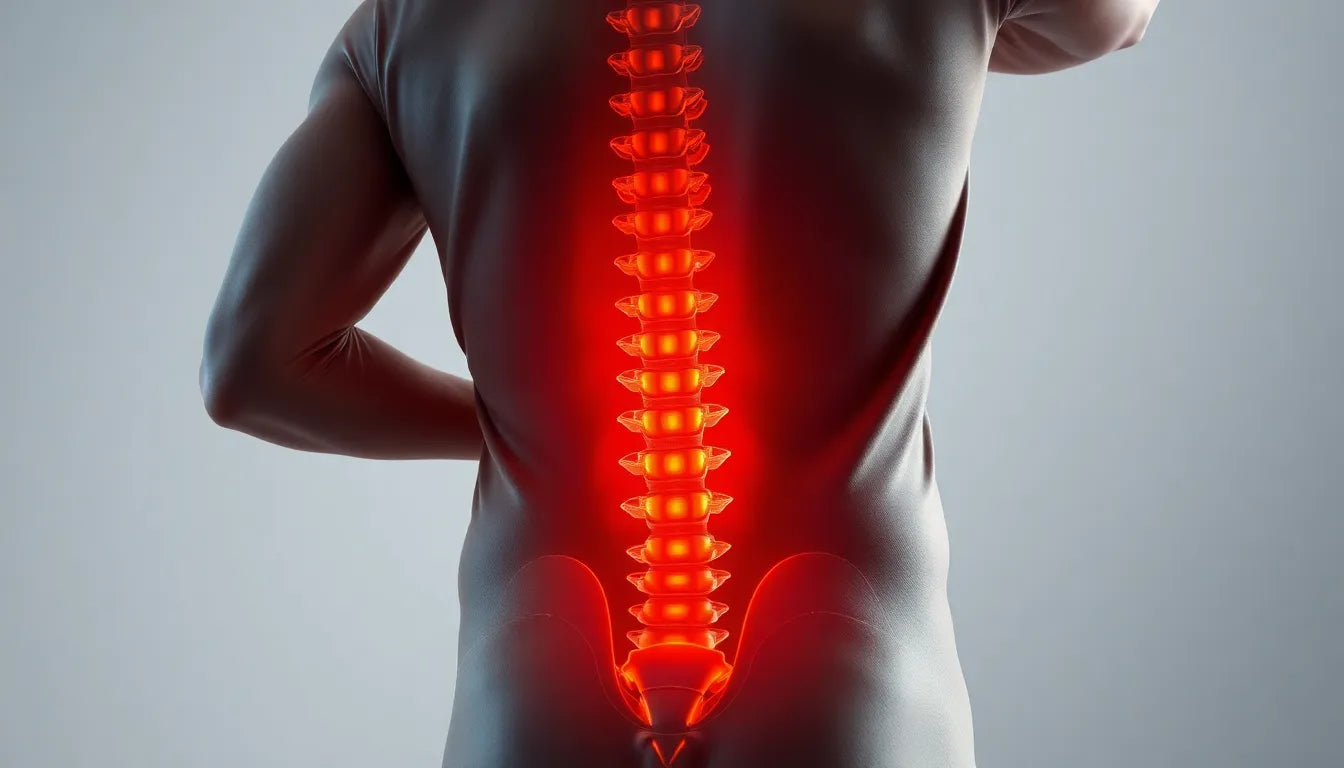The question "can a herniated disc return?" is a common concern for many individuals who have previously experienced this painful condition. Understanding the factors that contribute to the recurrence of herniated discs is crucial for anyone looking to prevent future episodes. By gaining insights into these factors, individuals can empower themselves to take proactive steps towards maintaining their spinal health and reducing the likelihood of recurrence.
A herniated disc, often resulting from wear and tear or sudden injury, can significantly impact one's quality of life. The recurrence of this condition is not uncommon, with studies indicating that herniated discs can recur in approximately 5% to 15% of cases. This statistic underscores the importance of addressing the potential for recurrence, particularly for those who have already undergone treatment or surgery for a herniated disc. Understanding the risks and prevention strategies is essential for anyone who has faced this issue.
The objective of this blog post is to provide comprehensive insights into the recurrence rates, causes, prevention strategies, and treatment options for herniated discs. By exploring these aspects, we aim to equip readers with the knowledge needed to manage their spinal health effectively. Whether you are recovering from a recent herniation or seeking to prevent future occurrences, this post will offer valuable information to help you navigate your journey towards a healthier spine.
Understanding herniated disc recurrence
Recurrence of a herniated disc can be a daunting prospect, but understanding why it happens is the first step in prevention. Several factors contribute to the likelihood of a herniated disc returning, including surgical techniques, patient-specific factors, and lifestyle choices. For instance, the method used during surgery can influence recurrence rates, as can individual factors like age, body mass index (BMI), and existing health conditions such as diabetes.
Moreover, lifestyle choices play a significant role in the recurrence of herniated discs. Aging, combined with poor lifestyle habits such as smoking and lack of exercise, can increase the risk. On the flip side, adopting a healthier lifestyle that includes regular exercise and proper posture can significantly reduce the chances of recurrence. This highlights the importance of not only understanding the causes but also actively engaging in preventive measures to maintain spinal health.
Recurrence rates and risk factors
When considering whether a herniated disc can return, it's essential to delve into the recurrence rates and associated risk factors. Research indicates that herniated discs can recur in about 5% to 15% of cases. Most recurrences occur at the same disc level and side as the initial herniation, highlighting the significance of understanding these risks.
One primary factor influencing recurrence is the surgical technique employed during initial treatment. Some techniques may leave behind residual disc material, increasing the potential for future herniations. Additionally, patient-specific factors such as age, body mass index (BMI), and underlying health conditions like diabetes can significantly impact recurrence rates. For instance, older age and higher BMI are often linked to increased stress on spinal discs, potentially leading to recurrent issues.
Clinical studies provide valuable insights into these risk factors. They indicate that patients with comorbidities like diabetes may experience slower healing and a higher likelihood of recurrence. Understanding these nuances can help patients and healthcare providers make informed decisions about treatment and preventive strategies.
Causes of herniated disc recurrence
The recurrence of a herniated disc can often be traced back to a few underlying causes. Incomplete healing from the initial injury or surgery is a significant contributor. If the disc does not heal properly, it remains vulnerable to further injury. Additionally, degenerative disc disease, a condition where the discs lose moisture and flexibility over time, can predispose individuals to recurrent herniations.
Improper post-surgical care and rehabilitation also play a crucial role. After surgery, patients must follow specific rehabilitation protocols to strengthen the back muscles and improve spinal support. Failure to adhere to these protocols can lead to weakened structures and a higher chance of recurrence.
Surgical factors, such as the technique used, can also affect recurrence rates. Minimally invasive procedures, while beneficial for recovery time, may not always remove all the problematic disc material, leaving room for recurrence. Therefore, the choice of surgical technique should be carefully considered in consultation with a healthcare professional.
Aging and lifestyle choices further complicate the picture. As individuals age, their spinal discs naturally degenerate, increasing the risk of herniation. Moreover, lifestyle factors like smoking, poor diet, and lack of exercise can exacerbate these issues, making recurrence more likely. Smoking, in particular, reduces blood flow to spinal discs, hindering their ability to heal and increasing the risk of re-injury.
Prevention of herniated disc recurrence
Preventing the recurrence of a herniated disc involves a multifaceted approach, primarily focusing on lifestyle changes and proactive health management. Strengthening core muscles is paramount, as a strong core provides better support for the spine, reducing the risk of future herniations. Incorporating exercises that target the abdominal and lower back muscles can significantly enhance spinal stability.
Maintaining good posture is another crucial strategy. Poor posture, especially during prolonged sitting or standing, can place undue stress on the spinal discs. Ergonomic adjustments at workstations and being mindful of posture during daily activities can help alleviate this stress.
Regular physical therapy and routine exercises play a vital role in prevention. Engaging in low-impact activities such as swimming, walking, or cycling can improve overall fitness without putting excessive strain on the spine. Physical therapists can also design personalized exercise programs to address individual needs and vulnerabilities.
It's also essential to avoid excessive spinal stress and harmful habits like smoking. Smoking cessation not only benefits overall health but also improves spinal disc health by enhancing blood flow and nutrient delivery to these crucial structures.
Empowerment through education is key. Patients should be encouraged to learn about their condition and the importance of adhering to preventive measures. As highlighted by sources like Chicago Spine, informed patients are better equipped to manage their health and make choices that reduce recurrence risks.
Long-term management focuses on maintaining flexibility and core strength. Regular check-ups with healthcare providers can help monitor spinal health and address any emerging issues promptly. By adopting these strategies, individuals can significantly reduce the likelihood of a herniated disc returning and enjoy a healthier, more active lifestyle.
Treatment and recovery options for herniated disc recurrence
When a herniated disc recurs, exploring treatment options becomes crucial to alleviate pain and restore function. Non-surgical interventions often serve as the first line of defense, focusing on physical therapy and rehabilitation exercises. These approaches aim to strengthen the muscles surrounding the spine, enhance flexibility, and improve overall posture. Physical therapists can tailor programs to meet individual needs, helping patients regain mobility and reduce the risk of further injury.
In some cases, surgery may be necessary if non-surgical treatments fail to provide relief or if neurological symptoms, such as weakness or numbness, worsen. The decision to undergo additional surgery should be made in consultation with a healthcare professional, considering factors like the severity of symptoms, overall health, and previous surgical outcomes. Advanced surgical techniques can address recurrent herniations more effectively, though they are typically reserved for cases where conservative treatments are insufficient.
Rehabilitation plays a critical role post-recurrence, regardless of whether surgery is performed. Strengthening the core muscles and improving spinal support are essential to prevent future episodes. Patients should engage in regular follow-up sessions with their healthcare providers to monitor progress and adjust treatment plans as needed. By prioritizing rehabilitation, individuals can enhance their recovery and reduce the likelihood of experiencing recurrent herniated discs.
Frequently Asked Questions
What is the likelihood of a herniated disc returning after surgery?
Recurrence rates post-surgery vary, with approximately 5-10% of cases experiencing a return of symptoms within a year. Factors such as surgical technique, patient health, and adherence to post-surgical care influence these rates.
How can I prevent a herniated disc from recurring?
Preventing recurrence involves adopting lifestyle changes such as strengthening core muscles, maintaining good posture, and engaging in regular physical therapy. Avoiding excessive spinal stress and harmful habits like smoking is also crucial.
What are the treatment options if a herniated disc recurs?
Treatment options include non-surgical methods like physical therapy and rehabilitation exercises. In severe cases, further surgery may be considered, depending on symptom severity and previous treatment outcomes.
Can lifestyle changes really make a difference in preventing recurrence?
Yes, lifestyle modifications significantly impact reducing recurrence risks. Regular exercise, a healthy diet, and avoiding smoking contribute to maintaining spinal health and preventing future herniations.
Are there specific exercises recommended to prevent recurrence?
Exercises focusing on core strengthening and flexibility, such as planks, bridges, and gentle yoga, are recommended to support spinal health. Consulting with a physical therapist can help tailor a program to individual needs.
By understanding the risks and implementing effective prevention strategies, individuals can manage their spinal health proactively and reduce the likelihood of herniated disc recurrence. Empowering oneself with knowledge and committing to a healthy lifestyle are key steps towards a pain-free and active life.
Sources
- "Recurrence Rates and Risk Factors for Herniated Discs." PMC.
- "Herniated Disc Recurrence After Discectomy." Regenerative Spine and Joint.
- "Preventing Herniated Disc Recurrence." Chicago Spine.
- "Prevention and Long-Term Management of Spinal Health." Spine MD.
- "Causes of Herniated Disc Recurrence." Avicenna Klinik.
- "Treatment and Recovery for Recurrent Herniated Discs." ADR Spine.























